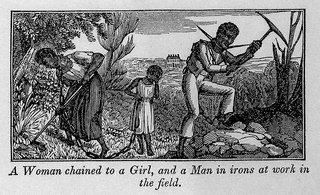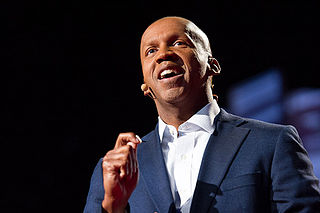
Dallas County is a county located in the central part of the U.S. state of Alabama. As of the 2020 census, its population was 38,462. The county seat is Selma. Its name is in honor of United States Secretary of the Treasury Alexander J. Dallas, who served from 1814 to 1816.

Pickens County is a county located on the west central border of the U.S. state of Alabama. As of the 2020 census, the population was 19,123. Its county seat is Carrollton, located in the center of the county. It is a prohibition, or dry county, although the communities of Carrollton and Aliceville voted to become wet in 2011 and 2012, respectively.

The Montgomery Bus Boycott was a political and social protest campaign against the policy of racial segregation on the public transit system of Montgomery, Alabama. It was a foundational event in the civil rights movement in the United States. The campaign lasted from December 5, 1955—the Monday after Rosa Parks, an African-American woman, was arrested for her refusal to surrender her seat to a white person—to December 20, 1956, when the federal ruling Browder v. Gayle took effect, and led to a United States Supreme Court decision that declared the Alabama and Montgomery laws that segregated buses were unconstitutional.
Reparations for slavery is the application of the concept of reparations to victims of slavery or their descendants. There are concepts for reparations in legal philosophy and reparations in transitional justice. In the US, reparations for slavery have been both given by legal ruling in court and/or given voluntarily by individuals and institutions.
An African American is a citizen or resident of the United States who has origins in any of the black populations of Africa. African American-related topics include:

African American history started with the arrival of Africans to North America in the 16th and 17th centuries. Former Spanish slaves who had been freed by Francis Drake arrived aboard the Golden Hind at New Albion in California in 1579. The European colonization of the Americas, and the resulting Atlantic slave trade, led to a large-scale transportation of enslaved Africans across the Atlantic; of the roughly 10–12 million Africans who were sold by the Barbary slave trade, either to European slavery or to servitude in the Americas, approximately 388,000 landed in North America. After arriving in various European colonies in North America, the enslaved Africans were sold to white colonists, primarily to work on cash crop plantations. A group of enslaved Africans arrived in the English Virginia Colony in 1619, marking the beginning of slavery in the colonial history of the United States; by 1776, roughly 20% of the British North American population was of African descent, both free and enslaved.
This is a timeline of African-American history, the part of history that deals with African Americans.

The Montgomery Advertiser is a daily newspaper and news website located in Montgomery, Alabama. It was founded in 1829.

America's Black Holocaust Museum (ABHM) is dedicated to the history of the Black Holocaust in America. The museum was founded in 1988 by James Cameron, who became well known after surviving a lynching.

Bryan Stevenson is an American lawyer, social justice activist, law professor at New York University School of Law, and the founder and executive director of the Equal Justice Initiative. Based in Montgomery, Alabama, he has challenged bias against the poor and minorities in the criminal justice system, especially children. He has helped achieve United States Supreme Court decisions that prohibit sentencing children under 18 to death or to life imprisonment without parole. He has assisted in cases that have saved dozens of prisoners from the death penalty, advocated for the poor, and developed community-based reform litigation aimed at improving the administration of criminal justice.
The Jim Crow laws were state and local laws introduced in the Southern United States in the late 19th and early 20th centuries that enforced racial segregation, "Jim Crow" being a pejorative term for an African American. Such laws remained in force until 1965. Formal and informal segregation policies were present in other areas of the United States as well, even as several states outside the South had banned discrimination in public accommodations and voting. Southern laws were enacted by white-dominated state legislatures to disenfranchise and remove political and economic gains made by African Americans during the Reconstruction era. Such continuing racial segregation was also supported by the successful Lily-White Movement.

African-American North Carolinians or Black North Carolinians are residents of the state of North Carolina who are of African ancestry. As of the 2010 U.S. Census, African Americans were 22% of the state's population. African enslaved people were brought to North Carolina during the slave trade.
The Equal Justice Initiative (EJI) is a non-profit organization, based in Montgomery, Alabama, that provides legal representation to prisoners who may have been wrongly convicted of crimes, poor prisoners without effective representation, and others who may have been denied a fair trial. It guarantees the defense of anyone in Alabama in a death penalty case.

The National Memorial for Peace and Justice, informally known as the National Lynching Memorial, is a memorial to commemorate the black victims of lynching in the United States. It is intended to focus on and acknowledge past racial terrorism and advocate for social justice in America. Founded by the non-profit Equal Justice Initiative, it opened in downtown Montgomery, Alabama on April 26, 2018.

Black Southerners are African Americans living in the Southern United States, the United States region with the largest black population.

Kwame Akoto-Bamfo is a multi-disciplinary artist, educator and activist, known for his sculptures and massive body of works dedicated to the memory, healing and Restorative Justice for people of African descent. His outdoor sculptures are dedicated to the memory of the victims of the Transatlantic slave trade, notably the installation Nkyinkim, on display at the National Memorial for Peace and Justice that opened in 2018 in Montgomery, Alabama. His other sculptures include an installation of 1,200 concrete heads representing Ghana's enslaved ancestors in Accra, the capital of Ghana. Called Faux-Reedom, it was unveiled in 2017.

Miles Phifer and Robert Crosky were lynched in Montgomery, Alabama for allegedly assaulting a white woman.
African Americans are the largest racial minority in Virginia. According to the 2010 Census, more than 1.5 million, or one in five Virginians is "Black or African American". African Americans were enslaved in the state. As of the 2020 U.S. Census, African Americans were 18.6% of the state's population.

An 18-year-old African American named William Turner was lynched on November 18, 1921, in Helena, Arkansas, for an alleged assault on a 15-year-old white girl. Two years earlier hundreds of African-Americans were killed during the Elaine Race Riot in Hoop Spur, a nearby community also in Phillips County, Arkansas.

Jake "Shake" Davis was a 62-year-old African-American man who was lynched in Miller County, Georgia by a white mob on July 14, 1922. According to the United States Senate Committee on the Judiciary it was the 38th of 61 lynchings during 1922 in the United States.















